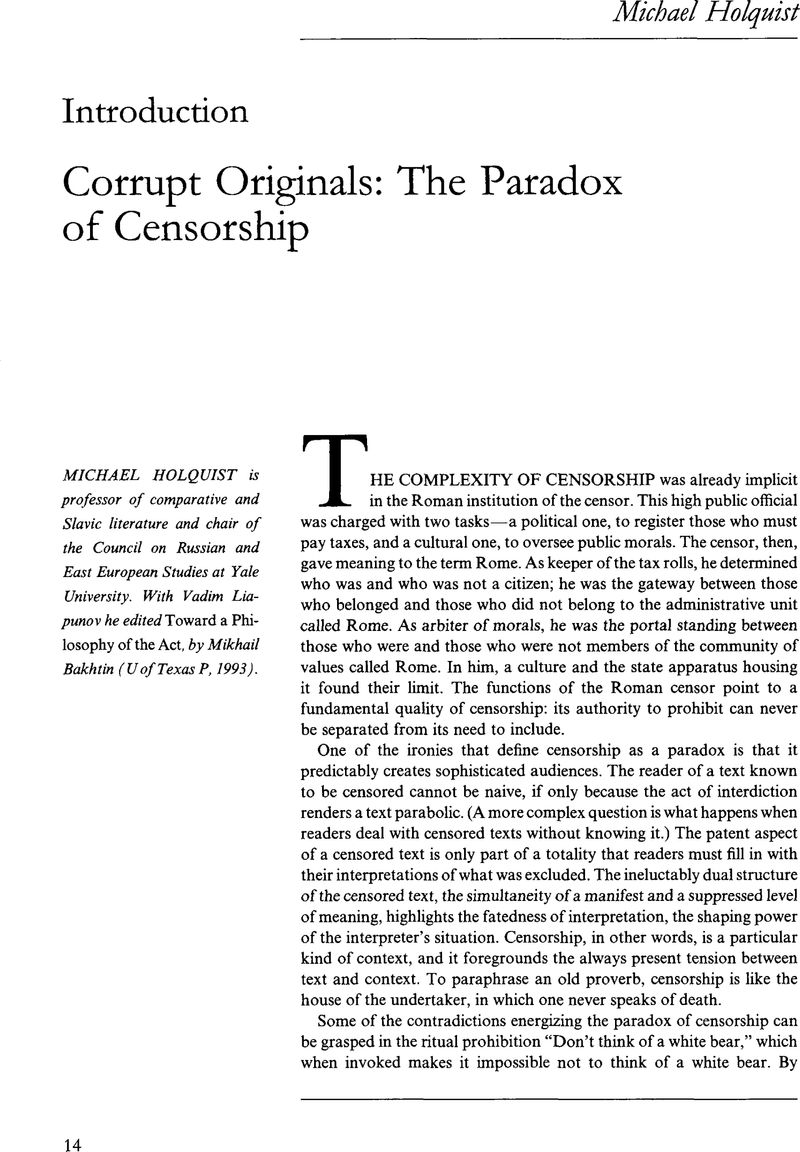Crossref Citations
This article has been cited by the following publications. This list is generated based on data provided by Crossref.
Martin, Laurent
2009.
Censure répressive et censure structurale : comment penser la censure dans le processus de communication ?.
Questions de communication,
p.
67.
Buckler, Julie A.
2009.
What Comes after “Post-Soviet” in Russian Studies?.
PMLA/Publications of the Modern Language Association of America,
Vol. 124,
Issue. 1,
p.
251.
Sherry, Samantha
2010.
Censorship in Translation in the Soviet Union: The Manipulative Rewriting of Howard Fast's NovelThe Passion of Sacco and Vanzetti.
Slavonica,
Vol. 16,
Issue. 1,
p.
1.
Lokugé, Chandani
2012.
The Novelist and Censorship: A Sri Lankan-Australian Perspective.
South Asian Review,
Vol. 33,
Issue. 3,
p.
327.
Lemonnier-Texier, Delphine
2013.
Éléments pour une étymologie culturelle de la censure dans l’aire anglophone, du XVIe au XXIe siècle.
Revue LISA / LISA e-journal,
Stark, Gary D.
2016.
Les censures dans le monde.
p.
71.
Hofman, Ana
2016.
Popular Music in Eastern Europe.
p.
129.
2018.
What Does It Mean to Be Post-Soviet?.
p.
135.
2018.
What Does It Mean to Be Post-Soviet?.
p.
105.
2018.
What Does It Mean to Be Post-Soviet?.
p.
119.
2018.
What Does It Mean to Be Post-Soviet?.
p.
84.
2018.
What Does It Mean to Be Post-Soviet?.
p.
33.
2018.
What Does It Mean to Be Post-Soviet?.
p.
65.
2018.
What Does It Mean to Be Post-Soviet?.
p.
129.
2018.
What Does It Mean to Be Post-Soviet?.
p.
25.
2018.
What Does It Mean to Be Post-Soviet?.
p.
1.
Frederiksen, Bodil Folke
2020.
Censorship as Negotiation: The State and Non-European Newspapers in Kenya, 1930–54.
Itinerario,
Vol. 44,
Issue. 2,
p.
391.
Malang, Thomas
2020.
Politische Komplexität, Governance von Innovationen und Policy-Netzwerke.
p.
113.
2020.
Yeung, Jessica Siu-yin
and
Cheuk, Michael Ka-chi
2023.
昨天今天明天: 內地與香港電影的政治、 藝術與傳統 (Yesterday, Today, Tomorrow: Hong Kong Cinema with Sino-links in Politics, Art, and Tradition), 吳國坤 Kenny K. K. Ng (2021).
Asian Cinema
,
Vol. 34,
Issue. 1,
p.
129.



